Many people ask, what’s the best handgun? Many of us would respond, what’re you using it for? Do you need an offensive handgun or a defensive one? The appropriate secondary for an SMU door kicker might be less than ideal for a small-framed individual carrying concealed. There are other considerations, of course. Here’s how Nick Perna looks at it.
⚠️ Some hyperlinks in this article may contain affiliate links. If you use them to make a purchase, we will receive a small commission at no additional cost to you. It’s just one way to Back the Bang. #backthebang
Tools
After I got out of the Army I briefly worked construction prior to entering law enforcement. I was essentially a laborer, but I also did some apprentice carpentry work. I learned early on to use the right tool for the job.
Take, for example, hammers. There are different types. Framing hammers are large and heavy for driving nails into plywood and support beams. Most tradesmen carry multi-use type hammers like Claw hammers. But sometimes they need specialized types like ball-peen hammers which are used to shape metal. Each type of hammer has a purpose so it’s up to the user to decide which he needs. The task dictates the type.
Handguns
We can draw an analogy regarding what type of handgun to carry in a tactical environment. As with hammers, there are many varieties available so it’s important to choose the right one. Tactical handguns, the type carried by military personnel and tactical police officers (SWAT), fall into two general categories: defensive handguns and offensive handguns.
Defensive Use
Defensive handguns are generally used for just that—self-defense. Military support troops who operate in less hostile environments carry them. Operators of crew-served weapons also carry them to use if the crew-served weapon becomes inoperable.
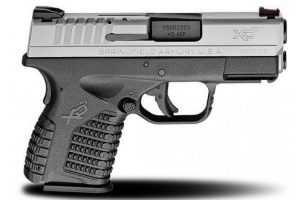
Small frame Springfield XD, one possible choice for a defensive handgun (image courtesy Springfield Armory)’
Offensive Use
For actual tactical operations, such as building clearing, offensive handguns are used in conjunction with heavier weapons, like assault rifles. Operators use handguns when clearing tight spaces such as ships or aircraft where their small size is optimal, compared to long guns.
Differences in Build
Offensive Handgun
So what’s the physical difference between the two types? Ideally, an offensive handgun is going to be large frame gun like an M1911, Glock 21 or Sig Sauer 320 (think framing hammer). At a minimum, it will be equipped with a rail-mounted light system for nighttime clearing or working in dark areas. It may have a laser system with IR capability as well. A threaded barrel is a good option for mounting a suppressor. Additionally, a red dot sight may be mounted. Extended magazines are a good idea as long as they don’t interfere with other gear.
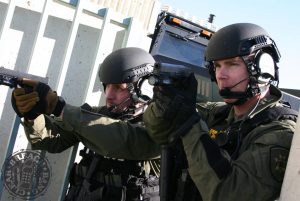
Tactical Officers using offensive handguns (Glock 22s) during building clearing exercise
Defensive Handgun
A defensive handgun could be a large frame but, preferably, a mid or small frame gun would be better. I say this because a smaller frame gun weighs less and takes up less room on a belt or tactical vest, making it possible to carry more gear. Belt and tac vest space can be at a premium and fills up quickly with ammo, med gear, and other essential stuff. Guns like the Glock 26 9mm or the Springfield XD compact are good examples of smaller-frame pistols. Add-ons like lights and holographic sights aren’t necessary. You can secret a small-frame gun behind a rifle magazine pouch on a tac vest or in a vest-mounted holder. Conversely, an offensive handgun is generally going in a drop leg rig.
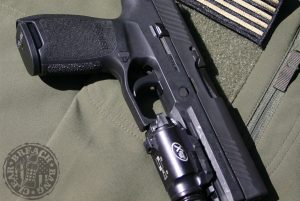
The new(ish) Sig Sauer P320, one of the new generations of offensive handgun
Ammo Requirements
Offensive Handgun
When carrying an offensive handgun you generally want to carry more ammunition for it. Since it’s going to be used in partnership with a long gun to engage bad guys, (otherwise known as gunfighting) it needs more ammo. An operator needs to make accommodations for this, ensuring he has space on his belt and vest for it.
This means you might have to leave some long gun ammo at home to make room for handgun mags. The mission dictates what the proper rifle-to-handgun-ammo ratio will be. Simply put, clearing more enclosed space equals the need for more handgun ammo.
Defensive Handgun
With a defensive handgun, on the other hand, you are going carry just enough ammo to protect yourself, especially if your long gun goes down. How much ammo depends on the situation; but bear in mind, everywhere you carry handgun ammo is a place where rifle ammo or other essential gear can be carried. Some environments limit pistol applications. For instance, does it make sense to carry two handgun magazines in the same amount of space that a rifle magazine could be carried? Is it worth sacrificing a strobe or radio batteries, two items that can definitely be lifesavers? So when you are going to work make sure you bring the right tools.
Nick
⚠️ Some hyperlinks in this article may contain affiliate links. If you use them to make a purchase, we will receive a small commission at no additional cost to you. It’s just one way to Back the Bang. #backthebang

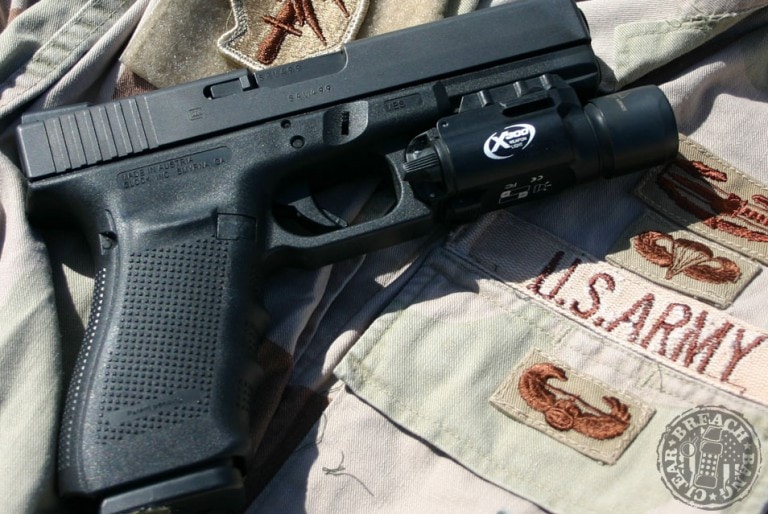



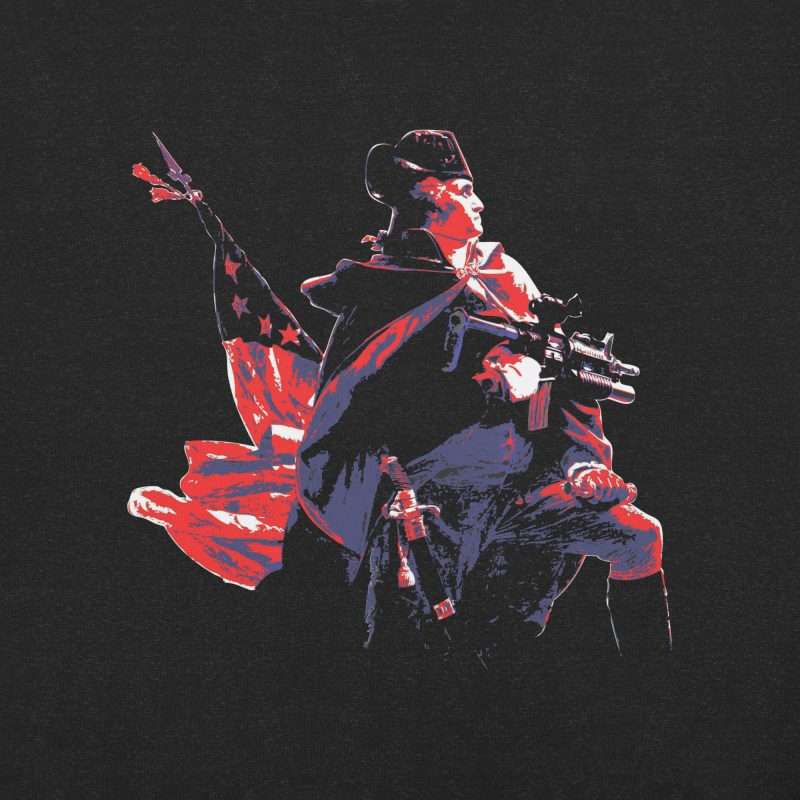

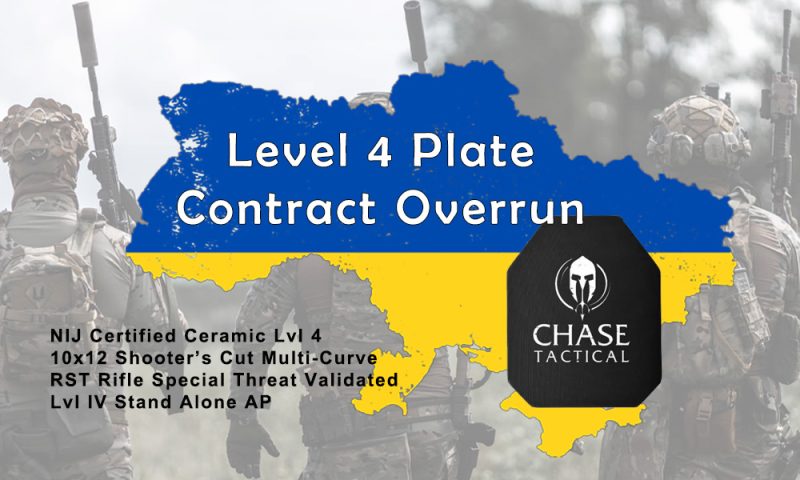



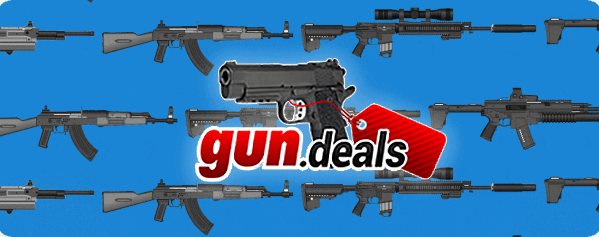
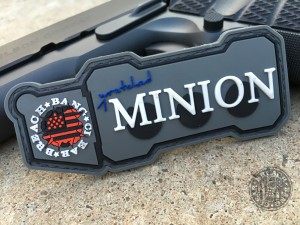
0 Comments